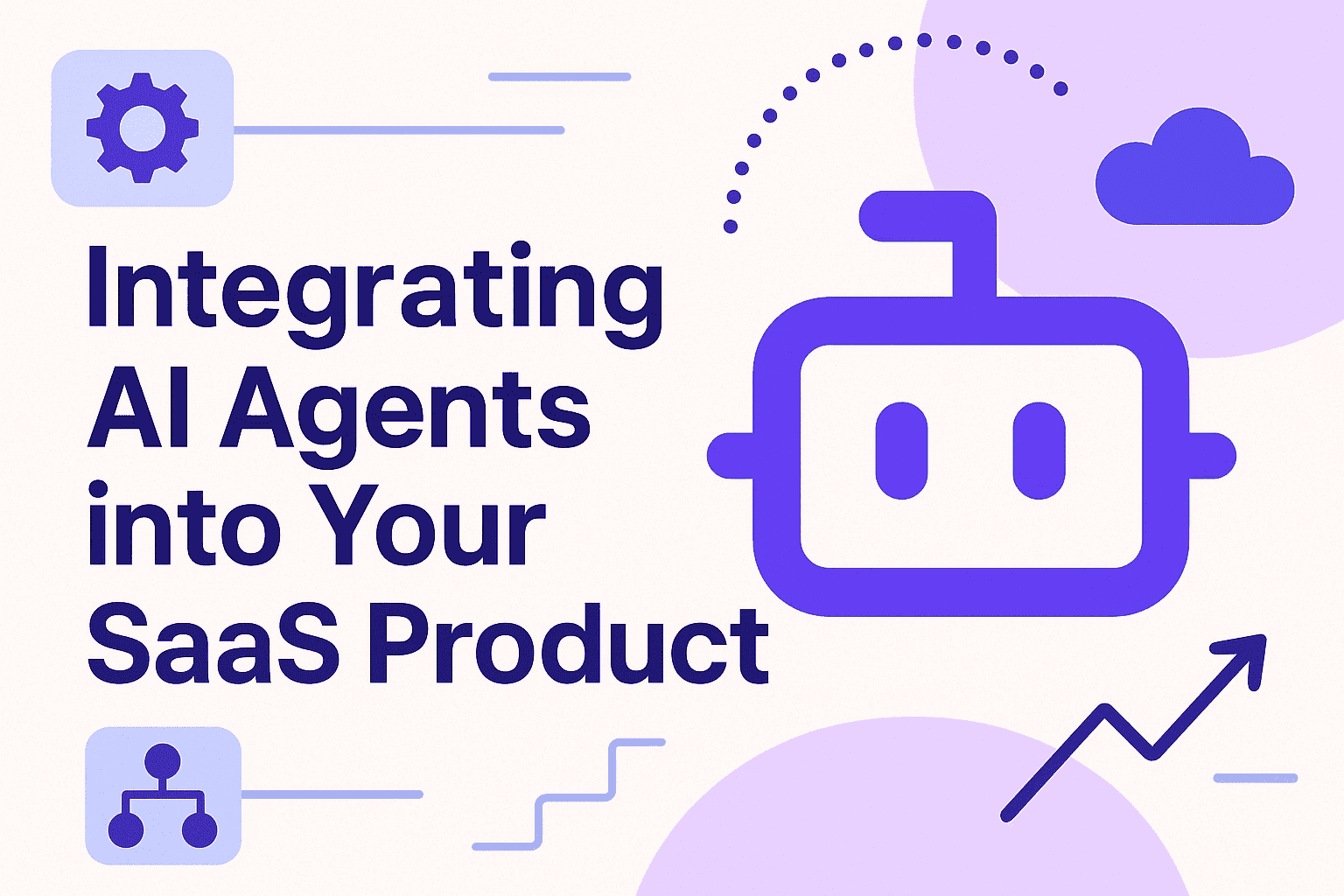How to Integrate AI Agents into Your SaaS Product

Artificial Intelligence (AI) is transforming the software landscape and SaaS products are no exception. If you’re building or scaling a SaaS product, integrating AI agents can unlock massive potential: automation, personalization, and smarter user interactions.
In this guide, we’ll explore how to integrate AI agents into your SaaS product and why it’s an essential step for future-ready platforms.
Why integrate AI agents into your SaaS ?
AI agents are autonomous software programs that perform tasks, make decisions, or interact with users based on rules or machine learning models. When integrated into SaaS platforms, they can:
- Automate repetitive tasks (e.g. onboarding, data entry)
- Improve customer support with 24/7 AI chatbots
- Personalize user experiences based on behavior
- Detect anomalies and optimize workflows in real time
Key benefits of AI integration in SaaS
1. Enhanced user experience
AI agents analyze user behavior to deliver tailored recommendations, dynamic content, and adaptive interfaces, improving engagement and satisfaction.
2. Operational efficiency
By automating routine operations, AI reduces manual workload, cuts operational costs, and accelerates processes especially valuable for growing teams.
3. Scalable customer support
AI-powered chatbots can handle thousands of user interactions simultaneously, delivering instant responses and routing complex queries to human agents.
4. Intelligent insights
Machine learning models embedded in AI agents help uncover trends, forecast user behavior, and generate actionable business intelligence.
How to get started with AI integration
Step 1: Identify high-impact use cases
Pinpoint areas where AI can drive real value. Common starting points include customer support, onboarding, and analytics.
Step 2: Design user-friendly interfaces
Ensure seamless interaction between users and AI agents. Clear workflows, intuitive UI/UX, and human fallback options are critical.
Step 3: Build, test, and iterate
Start with a pilot feature and collect user feedback. Use A/B testing to refine agent behavior and performance over time.
Step 4: Monitor and optimize
Implement tracking to evaluate agent efficiency and impact. Continuously train your models with updated data to improve outcomes.
Common challenges and how to overcome them
- Data Privacy: Ensure compliance with GDPR and similar regulations by anonymizing data and setting strict access controls.
- Model Accuracy: Regularly retrain models to reflect changing user behavior and new data.
- User Trust: Be transparent about AI usage and always offer a human fallback.
YooBot: The Smart way to add AI agents
YooBot simplifies AI integration for SaaS developers. With an intuitive interface, pre-built connectors, and powerful workflows, YooBot lets you deploy AI agents that automate tasks, improve UX, and scale effortlessly.
Final Thoughts
Integrating AI agents into your SaaS product isn’t just a tech upgrade, it’s a strategic move that can drive differentiation and efficiency. By focusing on clear use cases and user-friendly design, you’ll unlock powerful capabilities that scale with your business.